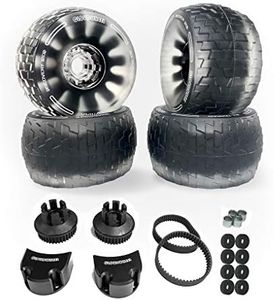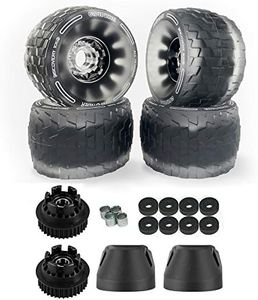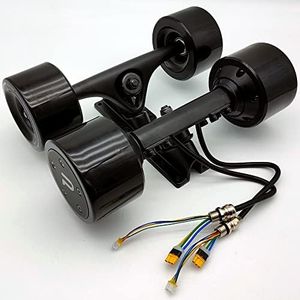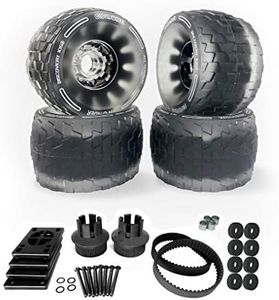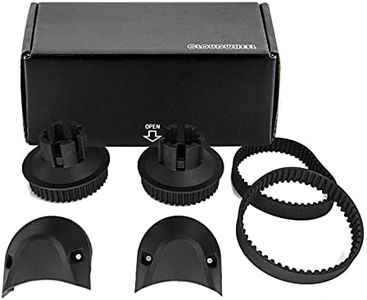We Use CookiesWe use cookies to enhance the security, performance,
functionality and for analytical and promotional activities. By continuing to browse this site you
are agreeing to our privacy policy
5 Best Electric Skateboards
From leading brands and best sellers available on the web.Buying Guide for the Best Electric Skateboards
Choosing the right electric skateboard is all about matching the board’s abilities with your intended use, comfort, and skill level. Think about how you plan to use the skateboard – will it be for commuting, fun rides, or off-road adventures? It helps to understand the main specifications so you can make a confident decision that ensures safety, enjoyment, and practicality.RangeRange describes how far the skateboard can travel on a single charge. This spec is important because it determines how much freedom you have before needing to stop and recharge. Electric skateboards typically offer ranges from around 7 to over 20 miles per charge. Shorter ranges are fine if you only want to ride around your neighborhood or campus, while longer ranges are better for commuting or lengthy rides. Think about how far you usually travel in a trip and make sure the range covers your typical use plus a little extra just in case.
Top SpeedTop speed tells you how fast the skateboard can go in ideal conditions. Speed is exciting and can be convenient, but higher speeds also require more skill and attention. Entry-level boards might reach 10-15 mph, which feels quick and is usually enough for most beginners or those who prioritize safety. More experienced riders or thrill-seekers might look for models that can go 20 mph or more. Consider how comfortable you are with speed and where you’ll be riding – crowded sidewalks may need a slower, more controlled board, while open paths can make higher speeds more enjoyable.
Motor PowerMotor power is measured in watts and indicates how much force the board can produce, affecting acceleration, hill climbing, and handling heavier riders. Lower wattage (250–500W) boards are suitable for flat surfaces and lighter riders, while higher wattage (700W and above, including dual motors) boards handle steeper hills, heavier users, and provide quicker acceleration. Choose according to your local terrain and your own weight – steeper hills and heavier bodies need more power for smooth rides.
Deck Material and FlexThe deck is the part you stand on, and its material and flexibility impact ride comfort and control. Popular materials include wood (like maple or bamboo) for flexibility and vibration absorption, and composites (like fiberglass) for extra strength. A flexible deck offers a smoother ride over bumps, making it better for cruising, while a stiff deck provides stability at higher speeds, which can be preferred by advanced or speed-focused riders. Your choice should depend on whether you value comfort or need stability for fast, aggressive riding.
Wheel Type and SizeWheels determine how the board handles bumps, cracks, and different surfaces. Softer and larger wheels (80mm and up) absorb shock better, providing a smoother ride over rough surfaces and making them good for beginners or uneven streets. Harder and smaller wheels are better for smooth pavement, offering more speed and agility but transmitting more vibration. Consider your typical route – if you expect rough roads or want comfort, go larger and softer; for smooth city paths, harder wheels are fine.
Weight and PortabilityThe weight of an electric skateboard decides how easy it is to carry when not riding, such as when going up stairs or riding public transportation. Lighter boards are convenient for commuters or anyone who needs to pick up and move the board often, but might have less range or smaller wheels. Heavier boards might have more power or range, but are less practical to carry. Think about your daily routine – if you’ll need to carry the board frequently, prioritize lighter options.
Braking SystemMost electric skateboards use regenerative braking, which slows the board and recharges the battery a bit. The responsiveness and smoothness of the braking can vary, and it is crucial for safety, especially when riding downhill or in crowded areas. Beginners may prefer a board with gentle, adjustable braking, while experienced riders might prioritize quick stopping power. Consider where you ride and your comfort level with high speeds or crowded spaces to decide how important a strong braking system is for you.
